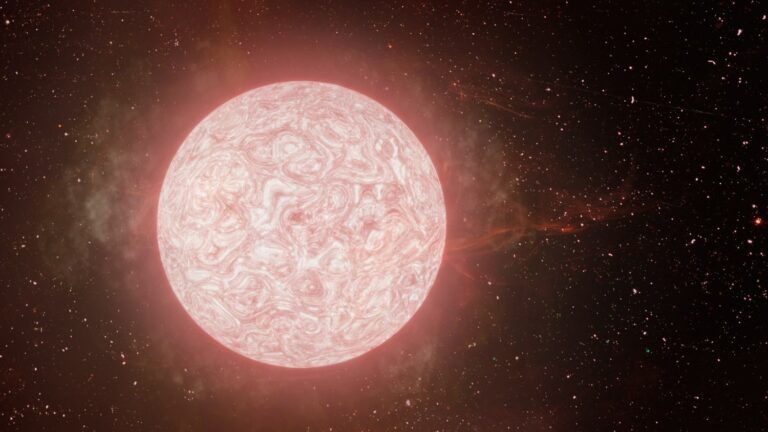Astronomers capture the explosive death of a massive star in real-time for the first time
A live view of the final phase of a red supergiant star before it exploded has been captured by astronomers that was the first time astronomers successfully documented the intense gas outbursts in the star that occurred over 100 days prior to its final explosion. By observing SN 2020tlf from Hawaii through telescopes, researchers managed to collect real time data that went against the preconceived notions about the actions of red supergiants before they go supernova. This discovery will show that such huge stars have some internal transformations before their densities start to provoke their collapse, expanding the knowledge of daily life of the greatest stars in the universe.
The research team saw SN 2020tlf, a red supergiant that is now around 120 million light-years away from us, more than 100 days before it exploded. This is due to the fact that at this period the star radiates through powerful flashes of light and gigantic gaseous explosions from its outer surface.
The Luminous Blue Variables, or LBVs pre-supernova eruptions came as a surprise to astronomers because previous research on red supergiants in their final stages was not observed in such violent activity.
“This is a powerful development in explaining the actions of very large stars right before their deaths,” noted Wynn Jacobson-Galán, a UC Berkeley research fellow and the paper’s author. “This is the first time it has been possible to watch a red supergiant star during its last moments. ”
When giant stars explode
Red supergiants are the largest stars by volume and such stars can reach hundreds or thousands of times the size of the Sun. They are not the biggest, or the brightest, stars in terms of size and luminosity, though.
As with our own Sun, these immensely vast stars create energy from nuclear fusion usually in their interior. However, because of their large mass, they can combine much heavier atoms than the hydrogen and helium which make up the sun. While processing more and more gigantic elements, their central part glows and pressure increases. In the long run, when they begin to transform iron and nickel, such stars cease to emit energy and their core contracts and the stellar mantle is shed in a classic type II supernova display.
While scientists can study red supergiants before and after the explosion this is the first time the apocalyptic event has been seen live.
The researchers of the new study started observing SN 2020tlf in the summer of this year and recorded bright flares of radiation that were further characterized as gas jets from the star’s photosphere. Observing the star’s activity with two telescopes located at Hawaii, Pan-STARRS1 telescope at the University of Hawaii Institute for Astronomy and W. M. Keck Observatory on the Mauna Kea peak, the team monitored the star during 130 days prior to the explosion.
The researchers noted a dense developed by the reflection of light from the outer layers that surrounded the star at the time of the explosion, probably from the gas distributed over the preceding months. This finding proves that the star produced violent eruptions long before the core, expired in late 2020, as supposed.
“The luminosity seen before the final collapse and explosion of a supermassive star has never been confirmed and recorded with such intensity in a red supergiant star,” said Raffaella Margutti, astrophysics professor at UC Berkeley and co-author of the study.
These observations indicate that red supergiants go through major internal processes, and that during the last months before the latter, the star experiences an enormous explosion of gases as reported by the research group.
Do not forget to share your opinion with us to provide you with the best posts !




0 Comments